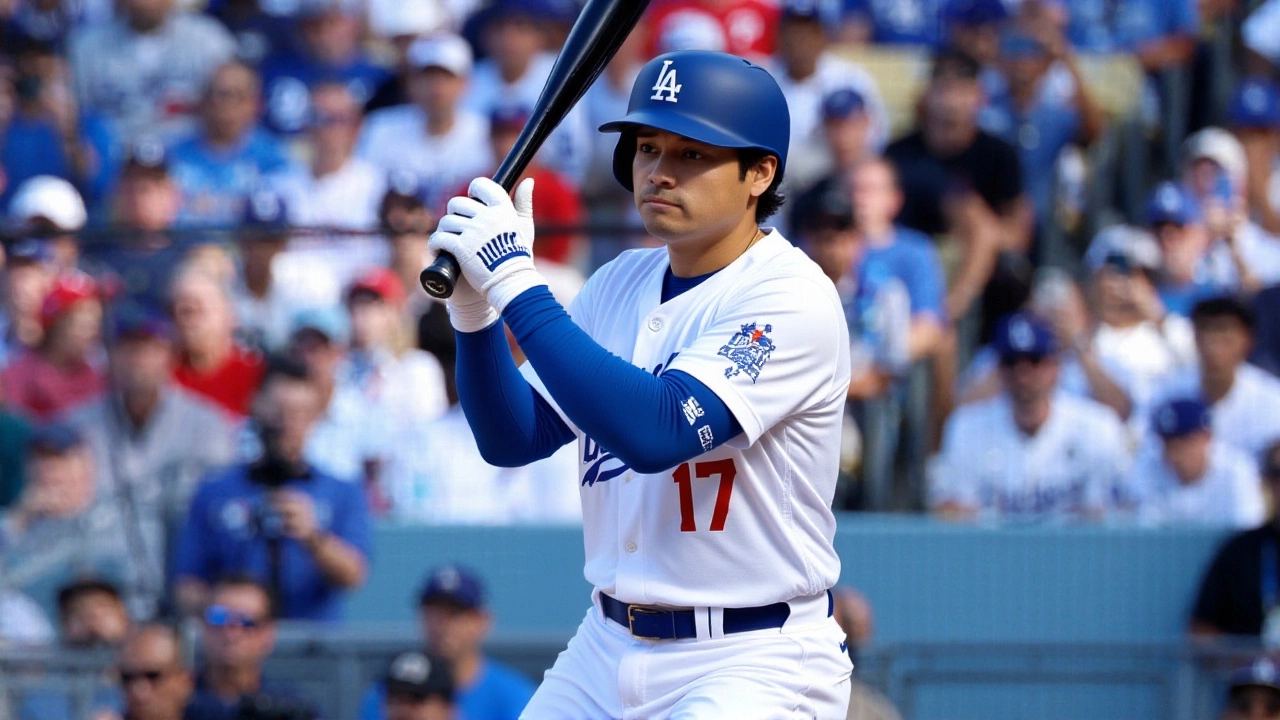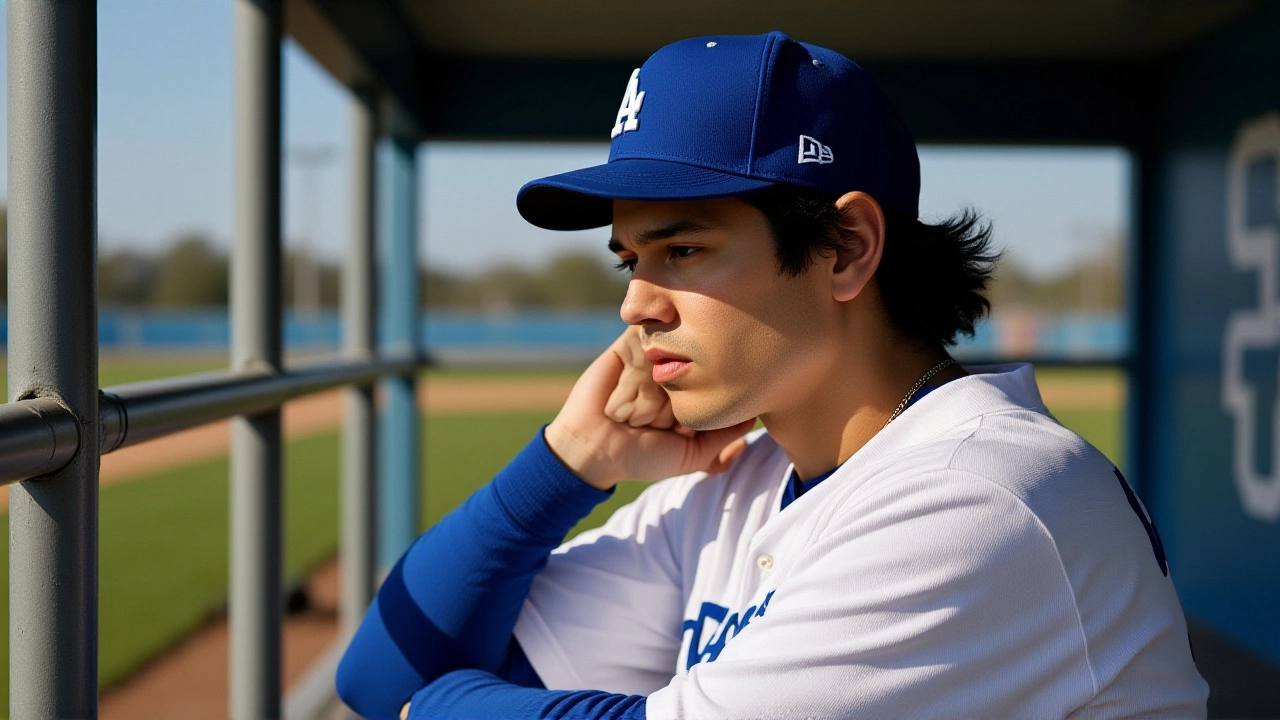When Shohei Ohtani, the 31‑year‑old two‑way phenom of the Los Angeles Dodgers, stepped onto the mound at Dodger Stadium on October 17, 2025, the baseball world held its breath.
What followed was a historic 6 ⅓‑inning, scoreless outing that featured three home runs, ten strikeouts and a swing that left the Milwaukee Brewers scrambling. The performance came in Game 4 of the 2025 National League Championship SeriesLos Angeles, California, and it sent the Dodgers straight to the World Series.
Background: Ohtani’s Season and Recent Slump
Before the NLCS, Ohtani had been battling a noticeable dip at the plate. In the final weeks of the regular season he averaged just .215 with three homers, a sharp contrast to his usual .280‑plus production. Dodgers manager Dave Roberts publicly noted the slump, saying Ohtani needed extra cage work between starts to regain his rhythm.
That extra work paid off, but the real question was whether his pitching could compensate. The Dodgers’ rotation had been solid all postseason, posting a combined 0.63 ERA, yet they still needed a spark to close out the series.
The Game‑by‑Game Explosion at Dodger Stadium
Ohtani opened the night by walking leadoff man Brice Turang, but quickly settled, fanning the next three hitters with a cocktail of 100‑mph fastballs and a newly tweaked splitter that baffled the Brewers’ batters.
In the bottom of the first, Ohtani turned on the bat and launched a leadoff home run off Jose Quintana. That blast marked the first time a pitcher ever hit a leadoff homer in any MLB game, regular‑season or postseason.
The second homer came in the fourth inning, a 469‑foot monster that sent the ball “out of the stadium,” according to reliever Alex Vesia in the bullpen. The third came in the seventh, completing a trio that made Ohtani the first pitcher to hit multiple home runs in a postseason contest.
On the mound, Ohtani struck out ten across six-plus innings, allowing only two hits. He retired the side on a total of 15 swings and misses, the hardest‑hit and longest‑traveling balls of the night according to MLB.com’s official statcast data.
Reactions from the Dugout and Bench
Third‑base veteran Max Muncy could barely contain his excitement. “You guys asked me yesterday, and I said I was expecting nothing short of incredible today,” he said. “He proved me wrong. He went beyond incredible.”
Roberts, usually measured, let loose a rare grin. “I knew my starters weren’t going to take down the most outs last season, and boy, what a luxury to have it the other way around,” he remarked. “Less stress on my body and more firepower on the field.”
The Brewers, stunned, could only watch as Ohtani’s ball left the park and his fastball bled strikeouts. Their own ace, Quintana, admitted after the game, “He’s a once‑in‑a‑generation talent. Tonight he was untouchable.”

Statistical Significance and Historical Firsts
- First pitcher in MLB history to hit a leadoff home run in any game.
- First pitcher to record multiple home runs in a postseason contest.
- Three hardest‑hit balls and three longest‑distance hits of Game 4.
- 10 strikeouts with only two hits allowed over 6 ⅓ innings.
- Dodgers rotation: 0.63 ERA, 35 strikeouts across 28 2⁄3 innings in the NLCS.
These numbers don’t just belong in the box score; they rewrite the conversation about two‑way players. Ohtani’s performance will be measured against Babe Ruth’s legendary 1921 season, but with the added twist of pitching in a modern, data‑driven era.
What This Means for the World Series
The Dodgers now head to the 2025 World Series, scheduled to begin October 25 against the American League champion – still to be decided, though the Houston Astros are strong favorites. Ohtani’s dual threat forces the opposing manager to rethink bullpen usage and lineup construction.
If the Brewers’ loss is any indicator, teams that cannot contain a pitcher who can also slug three homers will struggle to mount a comeback. Expect analysts to dissect Ohtani’s mechanics for weeks to come.
For Los Angeles fans, the night offered a reminder of why the franchise’s last World Series titles in 2020 and 2024 felt earned. This one feels inevitable.
Frequently Asked Questions
How did Ohtani’s performance affect the Dodgers’ chances in the World Series?
By delivering a six‑plus‑inning shutout and three home runs, Ohtani gave Los Angeles a 5‑1 lead that clinched the NL pennant. The dual threat forces any opponent to plan for both his arm and bat, dramatically improving the Dodgers’ odds once the series begins on October 25.
What records did Ohtani set in Game 4?
He became the first pitcher to hit a leadoff home run in any MLB game and the first to hit multiple homers in a postseason contest. He also logged the hardest‑hit and longest‑distance balls of the night.
Why was Ohtani’s slump significant before the NLCS?
His .215 batting average in the weeks leading up to the playoffs raised doubts about his offensive contribution, prompting manager Dave Roberts to emphasize extra cage work. The slump made his Game 4 resurgence all the more dramatic.
How did the Brewers respond to Ohtani’s dominance?
Milwaukee’s staff attempted to adjust by mixing pitch locations, but Ohtani’s splitter and fastball sequencing proved too elusive. Pitcher Jose Quintana later admitted the ball’s exit velocity left little room for a comeback.
What does this game mean for two‑way players in MLB?
Ohtani’s display reinforces that a genuine two‑way star can influence both sides of the ball at the highest level. Teams may now prioritize scouting and developing pitchers who can also hit, reshaping roster construction for years to come.



